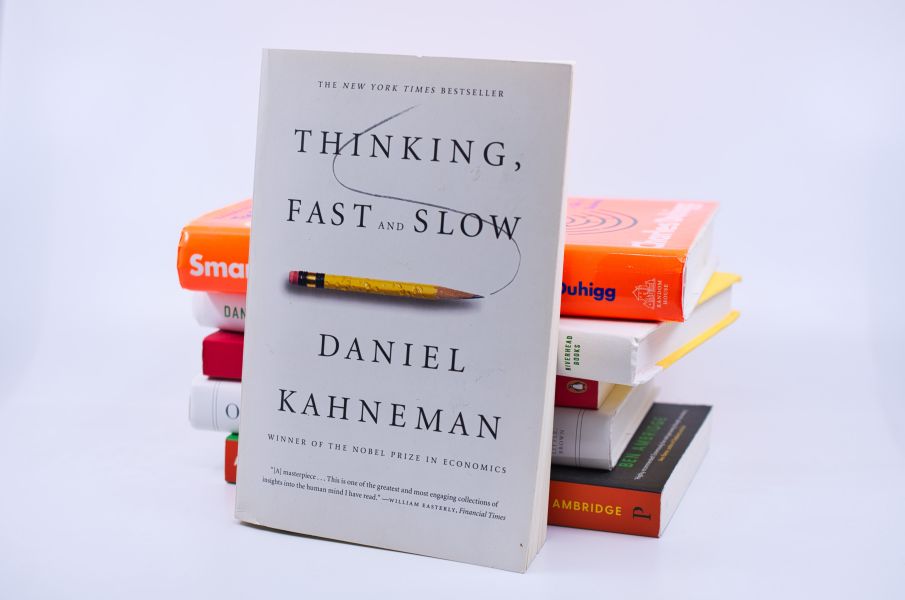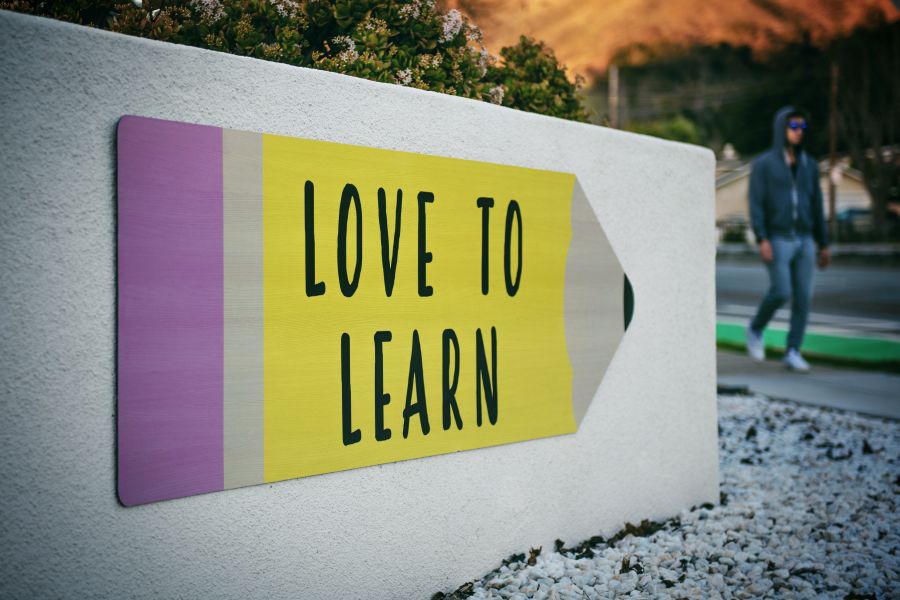初一下学期仁爱版英语教案1
一、教材分析
初中英语第一册(下)主要介绍了日常生活的交际用语以及一些西方国家的文化背景和风俗习惯,教材通俗易懂,旨在使初一级学生基本能用英语进行简单的交流。这套教材采用任务型语言教学模式,融汇话题、交际功能和语言结构,形成了一套循序渐进的生活化的学习程序。与原教材相比还增加了文化背景和学习策略等部分,并增加了任务型学习成份和语篇的输入。本书每个单元都列出明确的语言目标、主要的功能项目与语法结构、需要掌握的基本词汇,并分为A和B两部分。A部分是基本的语言内容,B部分是知识的扩展和综合的语言运用。这套教材是基于城市学生的状况编写的,对于我们农村学生来说,由于小学基础不好,到初中以后学起来的确有些吃力,光是一千多个单词就吓退了不少学生学习英语的兴趣。但我们还必须知难而上,为了提高农村的英语教学成绩而努力。指导学生通过活动把它们有机地联系起来,从而完成了知识迁移过程。常用的训练活动有以下几项:(1)Daily report:值日生介绍自己、家庭成员或朋友的情况,其它学生可互相提问题,询问个人职业。(2)Play a guessing game:用问题“what does he do?”引入任务,让学生猜测多媒体课件中人物的职业,以此激发学生的学习兴趣,并训练学生的发散思维能力。(3)Ask the way :创设问路情景,根据实际情况 telling the way,eg, I want to go the hospital 完成对话活动。(4)See the doctor、go shopping等:学生可扮演角色,进行对话。(5)Have a discussion :学生分小组讨论。 (6)What do you want to be when you grow up?通过训练把课内的语言学习与课外的语言活动结合起来,改变了过去老师一言堂的模式,变学生为主体,课堂主要是提供了一个学生获取知识的平台。学生在活动中主动地获取知识。
一、教学理念
1 遵循教学课标,认真备教材备学生,上好每一节课,向45分钟要质量。 2、要面向全体学生,关爱每个学生,激发他们学习英语的兴趣,帮助他们建立学习的成就感和自信心,培养自主学习的能力。3、设计教师的整体教学目标,目标设计以学生的学习技能,语言知识,情感态度,学习策略和文化意识的发展为基础;同时尊重个体差异,体现每个学生的主体意识,帮助学生制定小目标;4、采用任务型教学模式,让学生在老师的指导下通过感知、体验、实践、参与和合作等方式,实现任务的目标,感受成功,给每个学生带来喜悦;5、注重过程评价,促进学生能力发展,建立能激励学生学习兴趣和自主学习能力发展的评价体系。给学生充分的信心和支持,使他们在使用和学习英语的过程中,体会到轻松和成功的快乐,让学生在快乐中学习,让英语的工具功能得到充分体现;6、重视学生的思想品质教育,体现教育培养全面合格人才的方针政策。
二,学情分析
我所教的本届七年级8和9两班基础很差,学生在写的技能方面基本上没有得到过训练,连音标没讲过,甚至有一半的学生的拼读都没有掌握好。开学三周了,经过我和学生的不懈努力,并对学生思想教育,学习态度也有所好转。部分学生有了主动学习的动力,但是整体的惰性还是很强,我要积极主动的帮助他们重新建立学习兴趣。另外,学生在学习策略方面还存在很多需要进一步体会掌握的地方。很多学生不能明确学习英语的目的,没有真正认识到学习英语的目的在于交流;有些同学在学习中缺乏小组合作意识,不愿和其他学生交流,不能共同完成学习任务;大多数同学不能做好课前预习和课后复习,学习没有计划性,完全在老师的指挥棒之下学习,没能力做到总结语言规律和知识的巩固、积累。这些都是我和学生要长期作战艰苦努力才能解决的问题。我会慢慢给学生们信心去完成这些任务的,急是没有用的。让学生们乐于接受我的教学指导,并找到自成体系的办法才是解决问题的关键。
三 具体实施方案
1.要求学生坚持每单元一篇与所学内容相仿的作文,并及时批阅让学生及时发现不足加以改进;2.每天背诵课文中的文章。要求学生背诵并默写,培养语感,掌握语法知识的应用技巧;利用“组长检查及教师重点抽查”的方法及时检查,并给与及时的表扬。3.坚持周测、月测(可用作业进行)的形成性评价制度,给学生鼓励、表扬,不使用消极的语言打击学生;4. 对后进生进行专门辅导,布置单独的作业。制定合适的学习评价方法,让他们树立学习的自信;5. 加强对学生学习策略的指导,为他们终身学习奠定基础;6. 要充分利用学校先进的教育技术,使用计算机和多媒体教学设施,探索新的教学模式,开发英语教学资源,拓宽学生学习渠道,提教学效果。
四 教学进度安排
第1周:Unit5 Topic 1 How do you usually come to school? 5 课时
第2周: Topic 2 He is running on the playground.5 课时
第3周: Topic 3 My school life is very interesting.5课时
第4周: Unit 6 Topic1 Is there a computer in your study?5课时
第5周: Topic 2 What kind of home do you live in ?5课时
第6周: Topic 3 Which is the way to the post office?5课时
第7周: Review of Unit5_6 5课时
第8周:自测Unit 5_6 5课时
第9周:期中考试
第10周: Unit7 Topic 1 When is your birthday?5课时
第11周: Topic 2 Can you dance or draw?5课时
第12周: We had a wonderful party.5课时
第13周: Unit 7 复习测试5课时
第14周: Unit 8 Topic1 What’s the weather like in spring?5课时
第15周: Topic 2 The summer holidays are coming.5课时
第16周: Topic3 Let’s celebrate! 5课时
第17周: 总复习 5课时
第18周: 期末测试,写教学工作总结
初一下学期仁爱版英语教案2
Unit1Myname’sGina.
SectionA
一、教师寄语:
Athousand-lijourneyisstartedbytakingthefirststep.千里之行,始于足下。
二、学习目标:
Knowledgeaims(知识目标)
Keywords:mynamenicemeetyouwhat’shisher
Keyphrases:myname,firstname,lastname,answerthequestion.
Keysentences:What’syourname?
What’shisname?
What’shername?及回答。
Abilityaims(能力目标)
1.掌握简单的问候语,并能自我介绍,初步培养用英语进行交际的能力。
2.掌握听的技能,在听的过程中准确获取数字信息。
Moralaims(情感目标)
礼貌待人,培养良好的人际关系。
三、教学重难点
介绍自己,问候他人。
四、学习过程
1、预习导学及自测
英汉互译
1.name_________2.好的,令人愉快的______________
3.too___________4.遇见______5.your____________
6.his_________7.她的名字______
2、自主学习
①.onenum.1,一:Oneandtwomakesthree.一加二等于三。
adj.①一个:Ihaveonebook.我有一本书。②有一(天):Onedayhewillunderstandyou.有一天他会理解你的。
②meet/mi:t/v.遇到,碰到
【记忆法】-ee-双写,与meat为同音词。
【考点】tomeetsb.(orsth.)遇到某人/某事:Nicetomeetyou.初次见面时的客套话,不是初次见面时则用see。
【引申】meet也可用作名词,译为:会,集会:sportsmeet运动会。
③“What’syourname?”“MynameisGina.”“你叫什么名字?”“我叫吉娜。”
两人初次见面互相询问姓名时可用这个句型。如想反问时可说:Andyou?或者Andwhat’syourname?如:
A:Hello.What’syourname?
B:MynameisAnnRead.Andyou?/Andwhat’syourname?
A:I’mHanMei.
④Hello!你好!
Hello一般可作为熟人、朋友、青年人之间的招呼用语,语气较随便,译为“您好”;此外打电话或遇熟人时也可用。译为“喂”。在表示问候或唤起注意时,有时可用Hi来代替Hello,显得更为随便。如:
A:Hello/Hi,Jane!你好,简!
B:Hello/Hi,Jim!你好,吉姆!
3、合作探究
①动词be的现在时态
动词be就是我们所学过的am,is,are的动词原形。如何使用这三种形式主要取决于主语。当主语是第一人称I(我)时,用am,缩写为I’m;主语是第二人称you(你)或复数时,用are,缩写为you’re,主语是第三人称it/she/he(它/她/他)或名词及代词的单数时,用is,缩写为it’s/she’s/he’s。如:
Iam(I’m)LiuYing.我是刘英。
Youare(You’re)LinTao.你是林涛。
Itis(It’s)3344278
下面介绍一则口诀,帮你熟记“动词be的构成”:
我(I)用am,你(you)用are,is连着他(he),她(she),它(it)。
单数名词用is,复数名词全用are。
变否定,更容易,be后not加上去。
变疑问,往前提,句末问号莫丢弃。
②hello与hi
(1)hello与hi可以互换,都表示“喂,你好”。但hi比hello用得更多,显得更随和亲近,它尤被美国年轻人所使用。但打电话时常用hello而少用hi。熟人、朋友见面时,彼此问候仅仅说声Hi!就可以了。用hello时,不能“Hello,hello,hello”这样反复使用。
(2)要注意hello/hi一般不用于与师长、上级、年长者以及有体面的人打招呼,以免显得对长辈不够尊重。
③Do1CPracticetheconversation。
4、拓展创新
Step1
在英语中如何拼写中国人的姓名,联合国教科文组织已做规定“一律按汉语拼音的写法。姓和名分开,姓在前,名在后”。现举例说明:
(1)如果是单姓,名又是单字,则姓与名的第一个字母要大写,其余字母用小写。如:LiLei李雷。
(2)如果是单姓,名是双字,则姓的第一个字母大写,名的第一个字母大写,名的双字合在一起算一个词,不得分开。如:HanMeimei韩梅梅。
(3)如果是复姓,则把复姓字母连在一起,只是第一个字母大写,名字的拼写方法同上。如:SimaZhao司马昭,OuyangYunsong欧阳云松。
中英姓名比较──中文姓名是姓在前,名在后;英文姓名是姓在后,名在前。Mr用于姓前,如MrGreen不能说成MrJim.
(4)如果名字里有可能造成音的混淆的拼写时,要用连字号“-”或隔音号“’”隔开。如:
YangXi-an(Xi’an)杨西安,如写成YangXian就成了杨仙。
Step23a、3b、4
5、梳理归纳
一、Greetings(打招呼)
1.常见的表达方式
(1)Goodmorning!/Goodafternoon!/Goodevening!分别用于上午、下午、晚上见面问好。
(2)Hello!/Hi!用于朋友或熟悉的人之间相互打招呼。
(3)Nicetomeet/seeyou.该句答语常用Nicetomeet/seeyou,too.
2.文化背景及注意事项
(1)英语口语中多用省略句,如Goodmorning!也可以直接说Morning!
(2)相互熟悉的人见面打招呼用Howareyou?,初次见面一般用Howdoyoudo?
(3)和外国人打招呼时,不要用中国式的问候语,如:你吃饭了吗?你上哪儿去?
(4)Howareyou?原用于询问对方身体状况,现在逐渐失去原来的涵义,成为日常生活中的寒暄用语。
二、Self-introduction(自我介绍)
1.常见表达方式
(1)Iam…我是……
(2)Mynameis…我的名字是……
(3)如果询问对方名字,可以问:What’syourname?/MayIhaveyourname?
2.文化背景及注意事项
(1)如果见了长辈或年龄比自己大的人,用Mr.,Miss,Mrs.等称谓词+familyname(姓氏)。
(2)相互熟悉的同龄人之间可以直呼其名。
6、达标测试
Ⅰ.用所给词的适当形式补充完整
Bobby是个粗心的孩子,他写完作业不小心将墨水瓶打翻了。有的地方被墨水弄脏了,看不清了。
1.What's____________name?(you)
2.His____________Boris.(name)
3.Niceto____________you.(meet)
4.____________nameisGina.(I)
5.____________this?It'sabook.(what)
Ⅱ.单项选择
1.What'syourname?____________nameisJenny.
A.IB.I'mC.My
2.I'mHardy.____________tomeetyou.
A.LikeB.HappyC.Nice
3.Isthisyourbrother?What's____________name?
A.herB.hisC.your
4.MaryKingis____________newteacher.
A.IB.sheC.her
5.Hi!Thisis____________newteacher;____________nameisYangyan.
A.your;myB.his;yourC.your;her
五、典型例题解析
【例1】—yourname,please?—Mynameis.
A.What’s,JimGreenB.Who’s,JimGreen
C.What’s,GreenJimD.Who’s,GreenJim
精析What’syourname,please?询问对方的姓名,回答时用Mynameis…英语国家人的姓名结构顺序为:名+姓,故选A。答案A
【例2】—Hello!—!
A.YesB.HelloC.GoodD.Goodmorning
精析Hello!与Goodmorning!都是问候语,它们的答语就是其本身,故选B。如:
—Goodmorning,Joan.琼,早上好!
—Goodmorning,WenBo.闻博,早上好!
答案B
【例3】Youateacher.Iastudent.Mysisterastudent,too.
A.am;is;areB.is;are;amC.are;am;isD.are;is;is
精析动词be在一般现在时中根据不同的人称有不同的形式,在本题中,You与are连用,I与am连用,Mysister为第三人称单数,应与is连用。答案C
【例4】情景交际(根据情景,用所给的选项填空。)
(1)Mike:Hi,LiLei:I’mLiLei.
Mike:Nicetomeetyou.LiLei:Nicetomeetyou,too.
A:What’syourname?B:I’mMike.
(2)MissKing:That’sanicedress.Ann:.
A:ThankyouB.No,itisn’t
精析(1)某种情况把迈克和李磊聚到一起,他们意识到双方必须相互了解,相互做自我介绍。因此气氛比较随便,自报姓名往往是为了打听对方姓名的一种策略。对别人自报姓名所做出的回答一般是自报自己的姓名。
(2)在西方国家,当有人赞美你时,要说谢谢,而不像中国人习惯在别人赞美你时要表示谦虚。
答案(1)B(2)A
【例5】用动词be的适当形式填空。
(1)IinRow6.
(2)Whatyourname?
(3)youten?
精析本题考查的是系动词be的用法。系动词be(是),随着主语的人称和数的不同,又分为am,is,are三种不同的形式。Am用于第一人称单数;is用于第三人称单数;are用于第二人称单、复数和第一、三人称复数形式。如:Iam…;Itis…;Youare…。下面这则口诀可帮助记忆:我(I)用am,你(You)用are,is跟着他、她、它,一切复数都用are。答案(1)am(2)is(3)Are
六、中考链接
1.SheisastudentandnameisKate.
A.sheB.herC.hersD.his
2.ThisisMissGao.Sheyournewteacher.
A.beB.amC.isD.are
七、课后反思:
我的收获:____________________________________________
_______________________________________________________
我的不足:________________________________________________
我努力的方向是____________________________________________
初一下学期仁爱版英语教案3
Language goal
In this unit, students learn to talk about jobs.
New language
What do you do? I'm a reporter
What does he do.' He's a student.
What do you want to be? I want to be an actor .
What does she want to be? She wants to be a police officer
names of jobs and professions
Section A
Brainstorm with students a list of jobs that friends or relatives do. ("Brainstorming" is an activity in which you set a topic and students say whatever words they can think of relating to that topic.) Write the word jobs on the board and list all the jobs students mention.
Point to the jobs one by one and ask students to say what ever they can about these jobs. Accept single word answers or simple sentences such as, It's fun. It's a good job.
la This activity introduces the key vocabulary.
Focus attention on the art. Ask students to tell what they see in each scene. Ask students to name as many of the jobs shown as they can. Then point to a scene, name the job, and ask students to repeat.
Point to the numbered list of words. Say each one and ask students to repeat.
Then ask students to match each word wllfa one of the scenes. Say, Write the letter of each scene next to one of the ivords. Point to the sample answer.
1 b This activity gives students practice in understanding the target language in spoken conversation.
Point to the different people shown in the picture.Ask various students to tell what they do as you point to each one,
Say, Now you will hear three conversations. The conversations are about three of the people in this picture.
Play the recording the first time. Students only listen.
Play the recording a second time. This time ask students to write a number 1 next to the person being talked about in conversation 1. Have students put a 2 and 3 next to the people being talked about in conversations 2 and 3.
Correct the answers.
1 c This activity provides guided oral practice using the target language-
Ask a student to read the example conversation with you. Hold up the book and point to the doctor in the picture.
Say, Now work with your partner. Make your own conversations about the picture. You can use sentences like the ones in activity 1b.
Say a dialogue with a student. Point to a picture of one of the people. Guide the student to answer using one of the words in activity 1a.
As students work in pairs, move around the room monitoring their work. Oner language or pronunciation support as needed.
2a This activity gives students practice in understanding the target language in spoken conversation.
Ask students to look at the three pictures. Ask different students to tell you what they sec in each picture. What are the people doing? What jobs do they have?
Play the recording the first time. Students only listen.Say, You will hear conversations about the people in these pictures.
Play the recording a second time. Say, Write the number of each conversation below the picture of the person being talked about.
Correct the answers.
2b This activity gives students practice in understanding the target language in spoken conversation.
Point to the three headings in the chart and read the headings to the class. Ask students, What does "wants to be" mean? (It is not the Job the person lias now. It is the job the person wants in the future.)
Play the recording the first time. Students only listen.Say, You wiU hear about the people in these pictures. You will hear the job they haw now and the job they want in the future.
Play the recording a second time. This time ask students to fill in the blanks with the jobs the people have now and the ones they want in the future. Point out the sample
2c This activity provides guided oral practice using the target language.
Point out the pictures in activity 2a. Ask who each person is. (They are Susan's brother. Anna's mother, and Tony's father.)
Say, Now work with your partner. Ask and answer questions about the pictures. Ask, "What does he or she do?" Then ask, "What does he or she want to be?"
Say a dialogue with a student. Point to Anna's mother and then to the example in the speech balloons. Practice the dialogue with a student.
As students work In pairs, move around the room monitoring their work. Offer language support as needed.
3a This activity introduces the names for the places where people work, and gives reading practice using the target language.
Call attention to the pictures. Ask students to read the name for each place. As they name each place, write the word on the board and-ask the class to repeat it.
Point out the list of jobs with the numbers next to each. Then call attention to the people in the pictures and the speech bubbles. Point out the sample answer and have a student read out the speech bubble.
Ask students to work alone. Say, Write the number of each job in the square next to each workplace.
Check the answers.
3b This activity provides guided oral practice using the target language.
Point out the pictures in activity 3a. Ask students to name the workplace shown In each picture.
Then point out the conversation in the speech bubbles. Ask two students to read It to the class.
Say, Wow work with a partner. First practice the conversation in the picture. Then make new conversations. Use jobs and places from activity 3a.
Say a dialogue with a student. Point to the word waiter in activity 3a and then to the picture of the restaurant. Ask a student. Where does he work? Guide the student to answer using the correct place: He works in a restaurant.Then ask. What does he do? and guide the student to answer, He's a waiter.
As students work in pairs, move around the room monitoring their work. Offer language support as needed.
4 This activity provides listening and speaking practice using the target language.
Call attention to the pictures in the book showing how to play the game. Say, You will draw a picture of someone working. Other students will ask questions about the kind of job you are drawing. After two questions someone can try to guess the job.
Demonstrate by drawing a picture on the board of a stick figure reporter. Add details (microphone, notebook,etc.) until students guess what job it is.
Ask a student to go to the board. Say, Draw a picture of a person working. If necessary, help the student add details that show the job the person is doing. He or she can add a bank interior to show that the person is a bank clerk. A student could also use an eye chart on the wall to show that the place is a doctor's office and the person is a doctor.
Ask two different students to ask questions about the Job, and then ask a third student to guess what job it is.
Play the game using drawings by several different students.
Alternative: If you do not want students to move from their seats, then you can ask them to do this activity sitting down in groups of four. They will need pieces of paper on which to draw their pictures. They will also need pencils.
Section B
New language
Words that describe jobs, such as exciting, dangerous,boring, difficult, busy, fun
Additional materials to bring to class:
help wanted ads from an English-language newspaper
1 a This activity introduces the key vocabulary.
Focus attention on the six pictures. Ask, What job does the person have? Where does the person ivnrk?
Point out the numbered list of words. Say each one and ask students to repeat. Then use simple explanations and short sample sentences to help students understand what each word means. For example, Exciting means very interesting and very fast-moving. A police officer has an exciting job. The job is always changing. Something is always happening. For dangerous you might say, Dangerous means not safe. You might be hurt or killed in a dangerous job.
Then ask students to match each word with one of the pictures. Say, Write the letter of each picture next to one of the words. Point out the sample answer.
Check the answers.
1 b This activity provides guided oral practice using the target language.
Call attention to the picture In this activity and ask a student to read the statement to the class. Then point to the picture of the police officer and say. It's an exciting job. Ask the class to repeat. Then say, What else can you say about being a police officer? Someone may answer, It's a dangerous job. Ask the class to repeat each correct answer.
Then ask students to work in pairs. Suggest that they each point to the pictures of the workers and make statements about them. As students practice, move around the classroom monitoring their work.
1 c This activity provides an opportunity for oral practice.
Say, Name some of the jobs from this unit. Write this list of jobs on the board. Say, Can you name some other jobs? Add any new jobs to the list.
Ask some students to make statements about Jobs on the list using the words in activity la. You may wish to write some of the sentences on the board so that students can copy the sentences into their notebooks.
2a This activity provides listening and writing practice with the target language.
Call attention to the two headings and ask a student to read die headings to the class.
Point out the blank lines where students will write the name of a job (under the words wants to be).
Play Ihe recording the first time. Students only listen.
Say, Now I will play the tape again. This time write the name of a job under the words "wants to be."
2b This activity provides listening and writing practice with the target language,
Call attention to the second heading and ask a student to read it to the class. Say, This time you will unite why each person wants the job.
Play the recording again. Students only listen.
Then say, Now I will play the tape again. This time write the reason the person wants the job under the word "Why?"
Play the recording. Students write their answers.
Check the answers.
2C This activity provides open-ended oral practice using the target language.
Say, What do you want to be? What words describe each job? Help the class make up a list of jobs they might like to do. As students suggest possible jobs, ask the class to suggest words to describe them. Use a bilingual dictionary, if necessary, to find the names of jobs and words to describe each one.
Then ask students to work in small groups. They tell each other what they want to do and why. Encourage students to use dictionaries if necessary. Move from group to group offering assistance as needed.
Ask individual students to tell the class about what they want to be and why.
3a This activity provides reading and writing practice using the target language.
Call attention to the three newspaper ads and read these ads to the class. Say blank each time you come to a blank line.
Then read each ad again separately, pausing to allow students to ask questions about anything they don't understand. For example, in the first ad, students may not know that working late means "working at night." To work hard means to use a lot of energy to do the job.
Ask students to fill In (he blanks in the ads using the words actor, reporter, and waiter.
Check the answers.
3b This activity provides reading and writing practice using the target language.
Call attention to the newspaper ad and ask a student to read it, saying blank for each blank line.
Ask students to fill in the blanks using words from This section. Say,Look at the pictures next to each blank line. The pictures will help you guess the correct word.Suggest that they look at the names of jobs and the words that describe jobs in the first part of Section B.
Check the answers,
3c This activity provides writing practice using the target
language.
Point out the blank strip of newspaper where students can write their own ads.
Ask one or two students, What are you going to write about? Repeat each of the students' sentences and ask the class to repeat the sentences after you. For example: Do ^OM want an interesting but dangerous job? Do you want to meet new people? We need a police officer.Call the Smithtown Police Station at 555-2323.
Ask students to read their ads to a partner. Ask the pairs to correct each other's work.
4 This activity provides guided oral practice using the
target language.
Ask two students to read the conversation in the speech bubbles. Answer any questions students may have about it.
Then say, New please work in groups. Ask efuestions to find out what jobs each person wrote about. You can use sentences like the ones we just read.
As students ask questions, move from group to group. Rephrase any incomplete or incorrect questions.Also rephrase any inaccurate answers.
初一下学期仁爱版英语教案4
一、教学目标:
1. 语言知识目标:
1) 能掌握以下单词:
guitar, sing, swim, dance, chess, play chess, draw, speak, speak English, join, club
能掌握以下句型:
① —Can you play the guitar? —Yes, I can./ No, I can't.
② —What can you do? —I can dance.
③ —What club do you want to join? —I want to join the chess club.
2) 能了解以下语法:情态动词can的用法
want to do sth.的用法
2. 情感态度价值观目标:
以培养学生的一种群体意识。
二、教学重难点
1. 教学重点:
1) 学习询问和谈论彼此的能力和特长;2)
2. 教学难点:
情态动词can的构成和使用。
三、教学过程
Ⅰ. Lead in
1. : I can play the
guitar.…等;再指着图片说:He/She can play the violin.Can you play the guitar?….并引导学生进行简单的回答。
Then Check the answers with the class together.
Ⅱ. Presentation
He/She can dance/swim/sing//...等,学习表达活动的动词短语。
Ⅲ. Game (What can I do?)
T: Tell your partners what you can do. For example:
I can play the guitar. I can sing and dance.
Ⅳ. Listening
1. T: Now let’
(播放lb1b部分的教学任
务。)
Ⅴ. Pair work
(lc部分口语交际的教学任务,学会运用can询问和表达能力。) Ⅵ. Listening
力和写作能力,完成2b部分的教学任务。
Check the answers with the Ss.
Ⅶ. Pair work
1. Look at 2b and talk about what the people can do and the clubs they want to join.
老师可以和一名优秀的学生做一个对话的例子,让学生们明白如何去问答,例如:
T: What club does Lisa want to join?
S1: She wants to join the chess club.
T: Can she play chess?
S1: No, she can't.
2. Ss work in pairs to practice asking and answer about Lisa, Bob and Mary.
3. Ask some pairs to act out their conversations.
Ⅷ. Role-play
1. Ask Ss to look at the picture in 2d. Then Ss read the dialogue by themselves and try to find out the answers to
these questions.
① What club does Bob join?
② What club does Jane join?
Ss read the conversation by themselves and find the answers to the questions. Then check the answers:
① Bob joins the soccer club. ② Jane joins the English and art club.
2. Explain something that Ss can't understand.
3. Let Ss read after the teacher or play the recording and let Ss read after the recording.
4. Ss work in pairs to act out the conversation.
best.
Homework:
1. Remember the new words and expressions after class.
2. Write English names as many as possible in the exercises book.
初一下学期仁爱版英语教案5
一、教学目标:
1. 语言知识目标:
1) 继续练习运用情态动词can。学会询问和谈论彼此的能力和特长。 ① —Can you play the guitar? —Yes, I can./ No, I can't.
② —What can you do? —I can dance.
③ —What club do you want to join? —2. 情感态度价值观目标:
对自身的认识,为将来的自我发展奠定基础。
二、教学重难点
1. 教学重点:
1) 让学生重点总结、发现情态动词can2)
2. 教学难点:
1) 情态动词can的用法;2) 在实际交际活动中运用来询问与表达自己或他人的能力。
三、教学过程
Ⅰ. Warming- up and revision
T: Hi, S1! What can you do?
S1: I can sing and dance?
2. Role-play.
Ⅱ
1. 2. 中的句子,然后做填空练习。
①
② / 不,我不会。
Yes, ____ _______. / No, I _______.
… (其余试题见课件部分)
3. 学生们完成填空试题后,可以打开课本检查答案,对错误的句子,单独进行强化记忆。
Ⅲ. Try to Find
老师将情态动词的can的用法,以学案的方式呈现在大屏幕上,让学生自主学习,并发现其用法。
1. 可以看出,在Can…?句型中,情态动词can没有________和_______ 的变化。
2. 用情态动词can来询问他人的能力可以归纳为以下句型:
Can + _______ + _________ + 其他?
肯定回答:_________________
否定回答: _________________
What + can + _______ + ________ ?
学生们合作学习讨论上面学案的答案,总结情态动词can的用法。
老师找部分学生对上述问题作答,并一起讨论总结情态动词can的用法。
Ⅳ. Practice
1. Look at 3a. 告诉学生们用所给的词汇来造句子。首先,用情态动词can及所给的第一个动词词组来造一个一般疑问句,并作出一个否定的回答。然后,用转折连词but及第二个词组造一个肯定句。
Teacher makes the first one as a model:
Can Wu Jun speak English? No, he can't, but he can speak Chinese.
Ss try to make sentences using the phrases in 2~5. They can discuss with their partners.
Then let some Ss tell their answers to the class.
Check the answers with the class.
ou can show and try to complete the poster with the words in the box.
第三空格后有guitar一词,可知些空格应填play一词。其他类似。
分析能力及综合运用能力。
最后,教师与同学们一起校对答案,并对学生们有疑问的地方进行解释。
Ⅴ. Group work
2. First, work in group ask and answer about what you can do? e.g.
S1: What can you do, S2?
S2: I can do kong fu.
S1: Great! What about you S3?
S3: I can sing very well.
…
3. Then make a list together.
…
(最后,可以经学生们评议来推举最有能力的小组)Ⅵ. Exercises
1. If time is enough, do some more exercises on big screen.
Homework
1. Write a report about what your family members can do.
相关文章
内蒙古赤峰中考英语真题大全2023-06-05 02:23:42
英语情景词汇积累的教学成果反思范文2023-06-12 17:41:03
提高小学英语教学效率方法最新资料2023-06-06 21:16:03
高中英语一年级下学期教学计划2023-06-18 14:08:38
小学帮助学习入门英语的教学反思模板2023-06-16 01:04:35
儿童英语教学方法模板2023-06-13 21:40:18
上海对外经贸大学和北京交通大学(威海校区)对比哪个好(排名分数线区2024-03-31 16:25:18
河北高考排名237950名物理能上什么大学(能报哪些学校)2024-03-31 16:19:23
山东城市建设职业学院在山东招生人数和招生计划 多少人2024-03-31 16:15:16
上海农林职业技术学院在湖南招生人数和招生计划 多少人2024-03-31 16:12:52
吉林农业科技学院在湖南招生人数和招生计划 多少人2024-03-31 16:09:19
安徽高考多少分可以上云南经贸外事职业学院 招生人数和最低分2024-03-31 16:04:52
英语口语训练资料必备2023-06-04 15:33:44
新学期英语教学研修计划2023-06-08 10:37:44
小学三年级英语课程教案范文五篇2023-06-17 21:07:11





